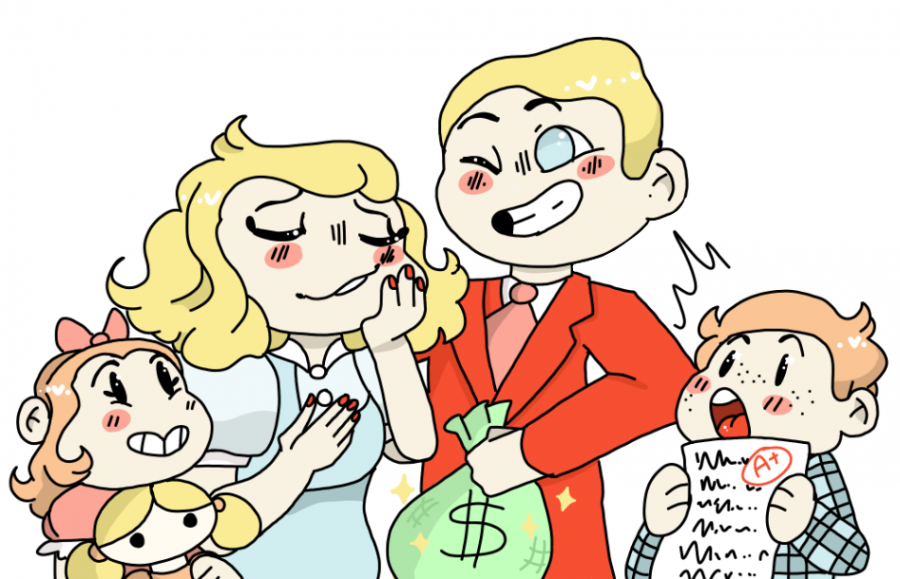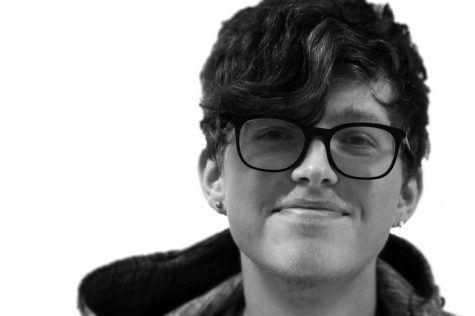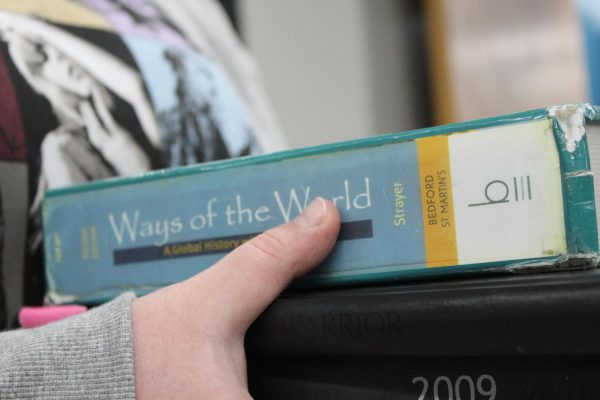What really makes us happy?
Though Generation Z places its value on fame and fortune, studies suggest that there are other keys to happiness
According to recent surveys, 80% of Generation Z wants to be rich and 50% wants to be famous—but are these really the secrets to happiness? Decades-long studies seem to indicate the opposite.
November 13, 2019
A recent survey conducted by the Harvard asked millennials what their most prominent life goals and aspirations were, this study concluded that 80% wanted to be rich and 50% wanted to be famous. Unlike previous generations, Gen Z’s biggest goal is fame or something similar to it.
Additionally, Generation Z is ambitious. “Two-thirds of Gen Z say that their goal in life is to make it to the top of their profession,” Quartz at Work reports, “they’re not necessarily interested in moving quickly up the corporate ladder.“
This data is a snapshot of Generation Z thinks is really important. But does subjecting ourselves to enrolling in colleges, getting married, being rich, wealthy, and being famous actually making younger generations happy and healthy?
A Harvard study of Adult Development might have just found an answer to that question. The scientists began tracking the health of 268 Harvard sophomores who finished college during World War II (started in 1938 during the Great Depression). The other subjects were a group of 456 Boston inner-city residents who had enlisted as part of the Glueck Study, 40 of which are still alive. Poverty had plagued these kids, meaning they grew up in poverty and these families were at a disadvantage financially. Most of these kids were up in tenements without hot or cold running water.
More than a decade ago, researchers added wives in the Grant and Glueck studies and the men’s offspring, who now number 1,300 and are in their 50s and 60s .These additions helped find out how early-life experiences affect health and aging over time. Women weren’t included in the original study because Harvard was an all-male school. This study included successful businessmen, doctors, lawyers. Some of them ended up as alcoholics and schizophrenics, but amongst the original study some of the most notable recruits was President John F. Kennedy and longtime Washington Post editor Ben Bradlee.
The studies were conducted so that people could find the underlying issue to what causes happiness and health. This project provided a solution for generations of children to bestow and dwell upon, but for a number of years we’ve still been conducting these interviews on these people’s lives; this data gave us a better perspective to what happiness really is since the studies took the “participants’ health trajectories and their broader lives, including their triumphs and failures in careers and marriage, and the findings have produced startling lessons, and not only for the researchers.”
When researches started this project, they believed that one’s physical characteristics, intellect, and personality had constituted one’s adult development. At the time the project was foreseen by the first director of the project Clark Heath, who “made detailed anthropometric measurements of skulls, brow bridges, and moles, wrote in-depth notes on the functioning of major organs, examined brain activity through electroencephalograms, and even analyzed the men’s handwriting.”
Ultimately, the answer to finding happiness throughout your whole life was discovered by the psychiatrist George Vaillant, who joined the team as a researcher in 1966, and lead the study from 1972 to 2004. Vaillant was trained in psychoanalysis, he believed that “the more education the inner city men obtained,the more likely they were to stop smoking, eat sensibly, and use alcohol in moderation.”
Valliant used this theoretical therapy (psychoanalysis) to rationalize that human personality can be split into conscious (thoughts, memories, feelings, and all the wishes someone has at any given time; these aspects are rational & positive) and unconscious (negative feelings, pain, anxiety, conflict, thoughts, memories that are outside of conscious awareness, and urges that someone has) mind and that they are always in conflict. Psychoanalysis is the goal to make your unconscious to a conscious mind.
Bearing this, Valliant theoretically linked this foundation to happiness and being healthy. He came to a conclusion, psychoanalysis influence someone’s behavior and cause mental diseases such as depression, generalized anxiety, sexual problems, self-destructive behavior, persistent psychological problems, disorders of identity, psychosomatic disorders, phobias, and obsessive-compulsive disorders.
Valliant later wrote the book “Aging Well: Surprising Guideposts to a Happier Life from the Landmark Study of Adult Development,” this book exemplified the six factors that produced a long healthy, prosperous, and happy life for the Harvard Crimson men. Valliant said, “The more education the inner city men obtained, the more likely they were to stop smoking, eat sensibly, and use alcohol in moderation.” He proved that being healthy (physically and mentally), maturity, and their relationships had determined their happiness.
The fourth director of this study, Robert Waldinger has publicized to the public that having good healthy relationships create happiness and has expanded this project to the wives and the children of the original men which represents the second-generation of the study. This prolonged project could give insight into what happiness and be healthy, candidly divulge the information to the next generation that wealth, and being famous make someone happy.
In a TED Talk, Waldinger describes their process. He states, “We interview them in their living rooms, we get medical records from their doctors, we draw their blood and scan their brain, we talk to their children, we interviewed them talking to their wives for their deepest concerns.”
He had explained that close, healthy, and intimate relationships create happiness whether if it is a friend or your wife. Social connections are essential for humans, and that “loneliness kills.” He had exemplified, “People who are most isolated than they want to be from others find that they are less happy, their health declines earlier in midlife, their brain functioning declines sooner, and they live shorter lives than people that are not lonely. One in five Americans reports that they are lonely.”
Secondly, the quality of the relationship matters. When a relationship has conflict, it’s really bad for your health. He stated, “the people that we’re most satisfied in their relationship at age 50 were the healthiest at age 80.”
Finally, the people that had good close relationships made their brain sharper and healthier and people in conflicting relationships experience early memory decline.
The people that fared the best were the people that leaned into relationships. Leaning into relationships could be like “as simple as replacing screen time with people, or living a stale relationship by doing something new together, long walks or date nights, reaching out to that family member who you haven’t spoken to in years, because all those-too-common feuds take a terrible toll on the people who hold grudges.”
This prolonged study will most likely expand into the third and fourth generations. “It will probably never be replicated,” he said about the vast amount of data that they have gathered. There most likely won’t be enlightening data that was produced like the original projects.
These decades of research seem to indicate that relationships and health (both physical and mental) all have a link to happiness and aging, and psychoanalysis plays a role in understanding one’s behavior. Advocating to Generation Z and Millenials that fame and wealth should not define happiness. Meantime, Waldinger is continuing this century long study to provide more answers to the question.























